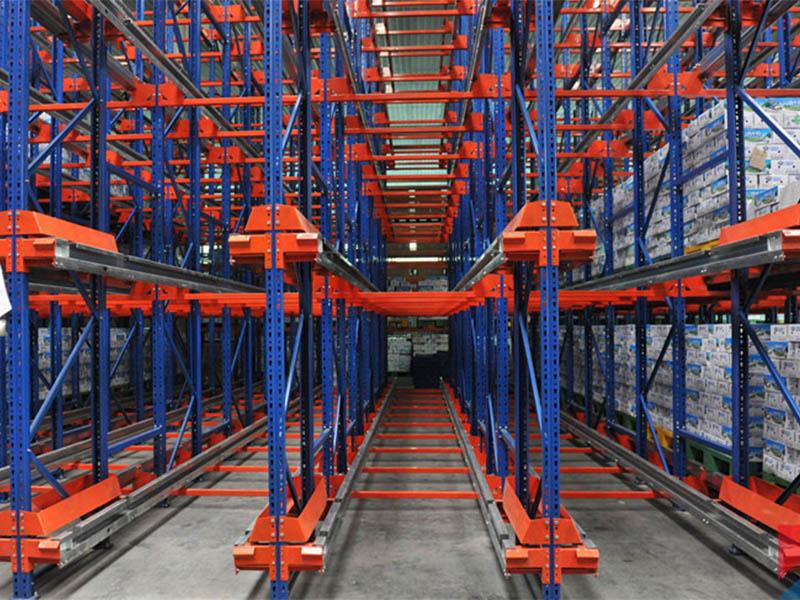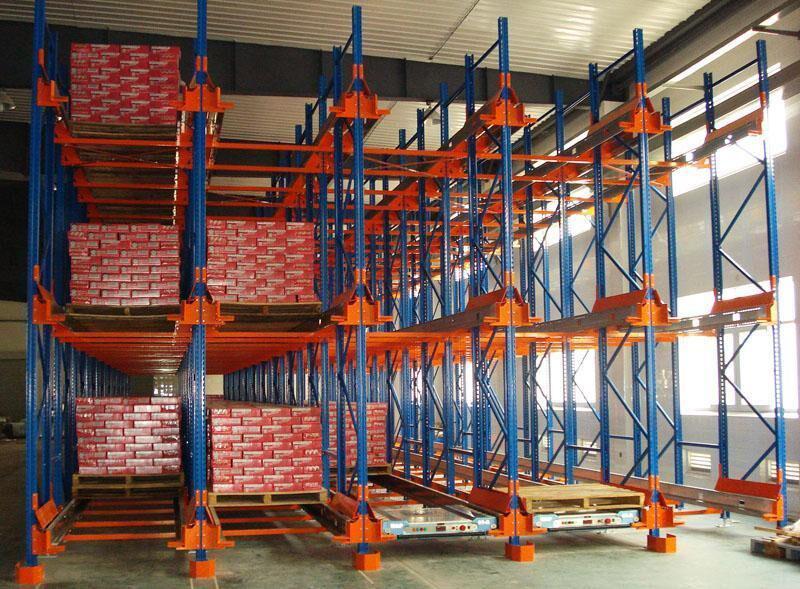In the high-stakes world of logistics, distribution, and manufacturing, maximizing storage density while ensuring efficient material handling is paramount. Pallet racking systems form the backbone of most modern warehouse operations, providing the structured framework necessary to store goods safely, accessibly, and space-efficiently. Choosing the right pallet racking system is not a one-size-fits-all decision; it requires careful consideration of inventory characteristics, operational workflows, and facility constraints. This article delves into the essential aspects of pallet racking systems, empowering you to make informed choices for your storage needs.

1. Understanding the Core Types of Pallet Racking Systems
The diversity of warehouse operations has led to the development of various pallet racking systems, each designed for specific applications and access requirements:
Selective Pallet Racking: The most common and versatile system. It allows direct access to every pallet location via aisles. Load beams connect to upright frames at adjustable heights, creating multiple storage levels. Ideal for warehouses with a high SKU count needing frequent access to any pallet. Its main advantage is 100% accessibility; its trade-off is requiring wider aisles for forklift maneuvering compared to denser systems.
Drive-In/Drive-Thru Racking: Designed for high-density storage of large quantities of homogeneous products with lower SKU rotation (e.g., FIFO or LIFO inventory). Pallets are stored on rails on multiple levels deep. Forklifts drive directly into the rack structure to place or retrieve pallets. Drive-In has an entrance on one side only (LIFO), while Drive-Thru has entrances on both ends (suitable for FIFO). This pallet racking system maximizes cube utilization but sacrifices selective access and requires specialized forklift operation.
Push Back Racking: Offers high density with better selectivity than drive-in systems. Pallets are stored on wheeled carts nested on inclined rails, typically 2-6 pallets deep per lane. When a new pallet is loaded, it pushes the pallets behind it further back. Retrieval is from the front – when the front pallet is removed, the next pallet rolls forward. This pallet racking system operates on a LIFO basis and provides a good balance of density and accessibility for medium-turnover SKUs.
Pallet Flow Racking (Dynamic Flow): Utilizes gravity for high-throughput, high-density FIFO inventory management. Pallets are loaded on the higher end of inclined roller or wheel tracks and flow towards the lower end (pick face) as front pallets are removed. Ideal for perishables, high-volume fast-moving goods, or production staging. Requires significant elevation change and careful speed control design within the pallet racking system.
Cantilever Racking: Primarily used for storing long, bulky, or irregularly shaped items that don't fit standard pallet racks, such as lumber, pipes, furniture, or rolls. Features strong vertical columns with projecting arms. Access is typically from the sides. While not strictly a pallet racking system for unit loads, it's a crucial variant within the broader storage system landscape.
2. The Anatomy of a Pallet Racking System: Key Components
Understanding the fundamental building blocks is crucial for specification, safety, and maintenance:
Upright Frames: The vertical backbone of the system, typically made from rolled steel sections. They feature punched holes or teardrop slots for adjustable beam connection. Frames are characterized by their height, depth, column gauge (thickness), and overall load capacity. Base plates anchor them to the floor.
Load Beams: Horizontal members that connect to the upright frames and directly support the pallets. They hook into the frame's slots or holes. Beam capacity and length are critical factors determined by the load weight and span. Beam levels are easily adjustable, allowing the pallet racking system to adapt to different pallet heights.
Wire Mesh Decking or Supports: Placed across the load beams to provide a stable surface for pallets, especially important for preventing small or unstable pallets from falling through. Decking also enhances safety by preventing items from falling. Alternatives include pallet support bars or cross beams.
Row Spacers and Braces: These components connect adjacent upright frames back-to-back, enhancing the overall stability and rigidity of the pallet racking system, particularly for multi-row installations.
Shims: Used during installation to ensure upright frames are perfectly plumb on uneven floors, critical for structural integrity and safe load bearing.
Safety Features: Integral components include column guards (to protect uprights from forklift impacts), post protectors, end-of-aisle guards, safety pins (to secure beams), and rack safety netting to contain falling debris.

3. Critical Considerations When Selecting a Pallet Racking System
Choosing the optimal pallet racking system involves a detailed analysis of multiple factors:
Inventory Profile: What are the dimensions (pallet size, overhang), weight, and fragility of your goods? How stable are your pallet loads? This directly dictates beam length, required decking, and load capacity per level.
SKU Count and Turnover Rate: How many different products do you store? How frequently is each SKU accessed (FIFO, LIFO, random access)? This determines whether selective, drive-in, push-back, or flow racking is most appropriate.
Warehouse Dimensions and Layout: What is the clear ceiling height? What are the overall floor dimensions? What are the locations of doors, columns, sprinklers, and other obstructions? These constraints dictate the maximum height and configuration of your pallet racking system.
Material Handling Equipment (MHE): What type of forklifts or order pickers will be used? Their lift height, turning radius, and fork dimensions determine required aisle widths (critical for selective racking) and the feasibility of systems like drive-in or VNA racking.
Budget: Costs vary significantly between system types (selective being generally lower cost per pallet position than high-density systems) and component specifications (e.g., steel gauge, decking type). Consider both initial investment and long-term operational efficiency gains. Installation costs are also a factor.
Future Growth and Flexibility: Can the system be easily reconfigured (beam levels adjusted), expanded, or integrated with automation? Choosing an adaptable pallet racking system provides long-term value.
4. Safety: The Non-Negotiable Aspect of Pallet Racking
Safety is paramount when dealing with heavy loads stored overhead. A compromised pallet racking system can lead to catastrophic failures:
Proper Design and Engineering: Systems must be designed by qualified professionals to meet local building codes and industry standards (like RMI - Rack Manufacturers Institute standards in the US, SEMA in the UK, FEM in Europe). This includes accurate load calculations and seismic considerations where applicable.
Correct Installation: Installation must strictly follow the manufacturer's specifications and engineered drawings by certified installers. Proper anchoring, bracing, and beam locking are critical.
Regular Inspections: Implement a documented, formal inspection program. Conduct thorough inspections:
By Operators: Daily visual checks before operation (looking for obvious damage, leaning racks).
By Trained Staff: Weekly or monthly inspections.
By a Qualified Rack Inspector: Comprehensive annual inspections. Inspections should document any damage (dents, bends, cracks, missing components, impacts) and track repairs.
Safe Operation: Enforce strict rules: never exceed stated load capacities per level or beam; ensure pallets are properly positioned on beams without overhang (unless designed for it); avoid impacts from MHE; keep aisles clear; use proper loading/unloading techniques. Damage must be reported and repaired immediately following manufacturer guidelines – never ignore it.
Load Signs: Clearly display the maximum permissible load per bay and per level on the pallet racking system uprights.
5. Integration and Optimization: Beyond Basic Storage
Modern pallet racking systems are rarely standalone. They integrate into the broader warehouse ecosystem:
Warehouse Management Systems (WMS): Pallet racking systems provide the physical locations that the WMS tracks. Accurate slotting within the racking, guided by the WMS, optimizes picking paths and inventory control.
Material Handling Equipment: The racking design dictates the type of MHE needed (e.g., narrow aisle forklifts for VNA racking, reach trucks for selective). Conversely, existing MHE constrains racking choices.
Picking Strategies: Racking configuration directly impacts picking efficiency. Carton flow modules can be integrated into selective racking for case picking. Mezzanines can be built over racking for multi-level operations. The layout of the pallet racking system defines pick paths.
Automation: Pallet racking systems form the structure for automated storage and retrieval systems (AS/RS). Shuttle systems operate within the lanes of deep storage racking (like drive-in or push-back). Robotic palletizers or depalletizers often feed directly into or out of the racking system.
Slotting Optimization: Strategically placing fast-moving items in easily accessible locations (e.g., golden zone in selective racking), grouping related items, and matching storage media (like flow lanes) to SKU velocity maximizes throughput within the pallet racking system.
Pallet racking systems are a critical, long-term investment in your warehouse's operational efficiency, safety, and scalability. There is no single "best" system; the optimal choice depends entirely on your specific operational requirements, inventory profile, budget, and growth plans. By thoroughly understanding the different types of pallet racking systems, their components, the critical selection factors, the absolute necessity of safety protocols, and their role within the wider warehouse ecosystem, you can make informed decisions.
Partnering with reputable pallet racking system manufacturers, qualified engineers, and certified installers is essential. Prioritize safety through diligent inspections and adherence to load capacities. A well-chosen, properly installed, and meticulously maintained pallet racking system will provide the robust, flexible, and efficient storage foundation your warehouse needs to thrive, both today and in the future. Careful planning and execution transform this fundamental infrastructure into a powerful driver of productivity and cost savings.







